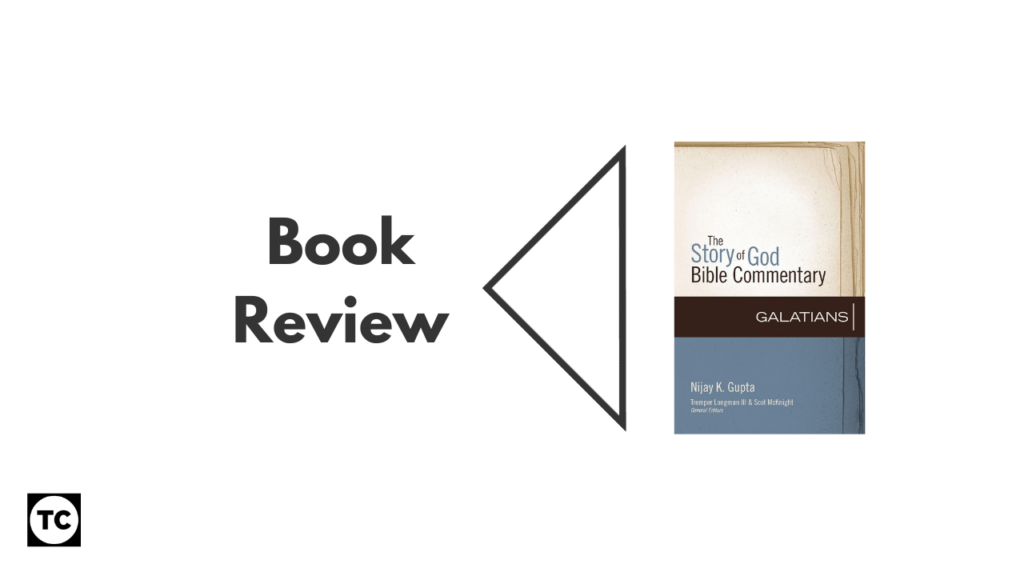Reviewing commentaries is a tricky business – particularly for me as a generalist, and an in-publisher editor of commentaries! I tend to offer my review based on the format and content of the volume, and it’s utility or otherwise to preachers and pastors. Occasionally I’ll digress into particularly theological or stylistic quirks.

Galatians is, as I say when writing about it in different contexts, probably the Pauline epistle I’m most comfortable with and well-read in. Earlier this year I read and reviewed N. T. Wright’s new commentary on the book, and last year I saw a book on Galatians that I edited, published. The book I’m reviewing today is in the Story of God Bible Commentary [SGBC], a fairly new series from Zondervan, which in my mind is best described as a blend between the NIV Application Commentary [NIVAC], and the Bible Speaks Today – packaged in a nice hardback format that invites the reader. Gupta is someone I’ve read a few books by recently – and he is a prolific writer. Having enjoyed (though not totally convinced by) Christopher J. H. Wright’s Exodus in the SGBC earlier in the year, I was excited to see how the SGBC format works with a New Testament book.
I think this series format comes into its own in the New Testament – though that is testament to Gupta’s gift as a writer and commentator. He has written a book that is a genuinely useful resource for pastors and disciples – I read it, as I tend to with commentaries, in my devotional time and found it helpful. The SGBC format is quite simple, with each passage/pericope forming a chapter of the book, with the content laid out thus:
- Listen to the Story – The text of the pericope in the NIV, with a selection of key biblical themes/references at the end in italics. This last is particularly useful for NT passages, showing how the text relates to the wider canon.
- Explain the Story – a contextual/canonical/historically rooted reading, that tells the reader what is going on in the text. This is helpful, particularly in a book like Galatians, wherein there is quite a lot going on.
- Live the Story – the application section, which calls to my mind the aforementioned NIVAC, and wherein Gupta’s keen sense of cultural issues and the clarity of the Bible to speak to them is well-matched.
After prefaces and abbreviations, Gupta offers a 24 page introduction, before around 230 pages (or thereabouts – there are a few blank versos [left hand page] so that chapters start on the recto [right hand page] consistently) of commentary. The bibliography is at the end, followed by indices of Scripture, Subject and Author. This layout – alongside the structure of the commentary I’ve outlined and highlighted above – makes it fairly clear that the SGBC is aimed at pastors and ‘lay readers’, rather than academics – and this definitely came out in my devotional read-through. I would note, though, that Gupta is a competent scholar, and the keen reader will find plenty in the footnotes to intrigue and divert.
Echoing the level of the series, this is a very readable book, with unusual words carefully explained, anecdotes (including a particularly ‘British’ self-deprecating one about Gupta’s hair and hat) and so on – and Gupta writes in a way that invites the reader along the way, rather than teaching down or berating and haranguing judgementally. He picks up a Pauline theme in the introduction that reminded me of the previous commentary, on Ephesians, that I’ve read and just reviewed, “What unites all Christians is… participation in Christ” (p. 15) – with Galatians engaging some of the religious, ethical and social aspects of what that means. I appreciated Gupta’s clarity in linking this kind of reading to the essential practice of evangelism: “Part of living this story of God is being able to tell your story of faith” (p. 50). In many ways, this is a very evangelical commentary, in the classic, Bebbingtonian sense, as Gupta also writes “Faith must act; it will act; what we value and cherish will direct our lives. Faith is not static; it works; it wills, it expresses itself, and true Christian faith becomes faithful affection and loyal love” (p. 97). Amen!
The complex relationship between Old and New Testament, traditional Judaism and the emerging Christianity, is carefully dealt with – Gupta is a careful in being clear that ritual and religion are not in themselves bad, but the focus is key: “The Son of God came, not to reinforce being under the law but to release humanity from it’s confinement” (p. 164). I appreciated how he discussed 5:16-26, “Paul’s perspective on the life of faith was that it is not best lived according to specific do’s and don’ts. Rather, he taught key concepts and virtues, like freedom, love, and walking with the Spirit.” (p. 237). This is a commentary whose author has carefully and I imagine prayerfully read and considered the text, and it shows.
Overall, then, this is in my view an excellent readable pastoral commentary on Galatians. There is some more technical stuff going on in the footnotes, but I think Gupta has nailed the SGBC target readership of pastors and ‘normal Christians’. I would recommend this to someone thinking of preaching through Galatians for the first time (alongside Neil Martin’s ‘Galatians Reconsidered’!), and also as a commentary to be used devotionally.
5/5
Leave a Reply